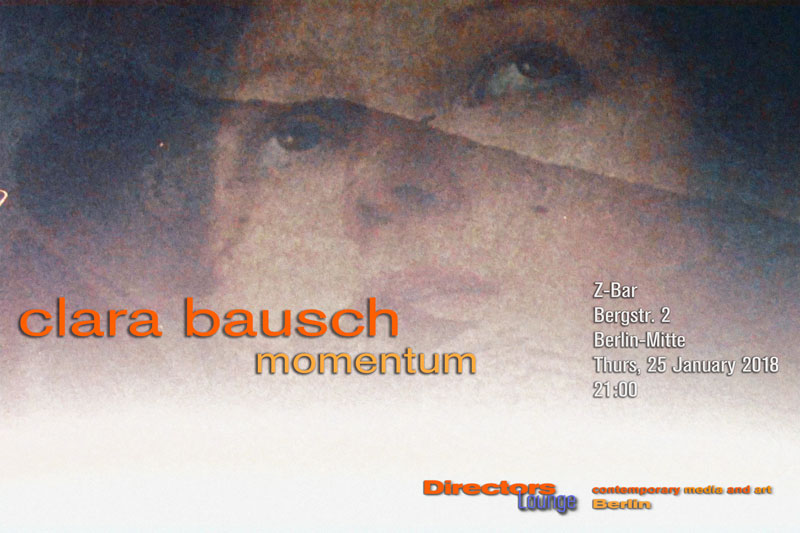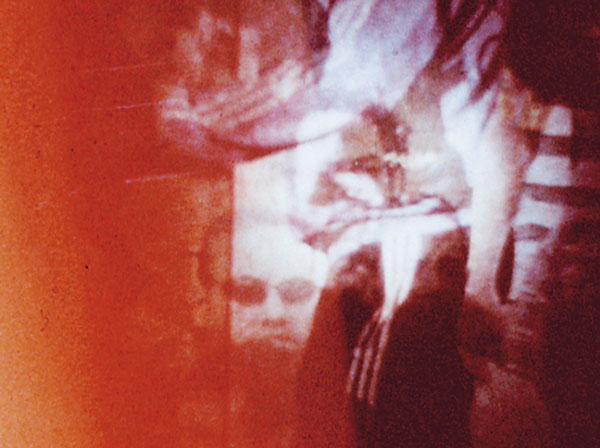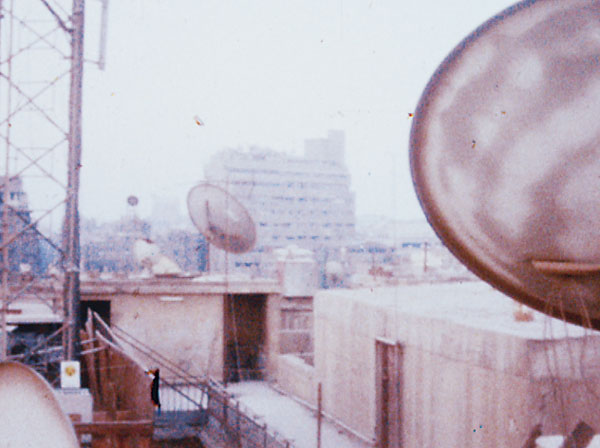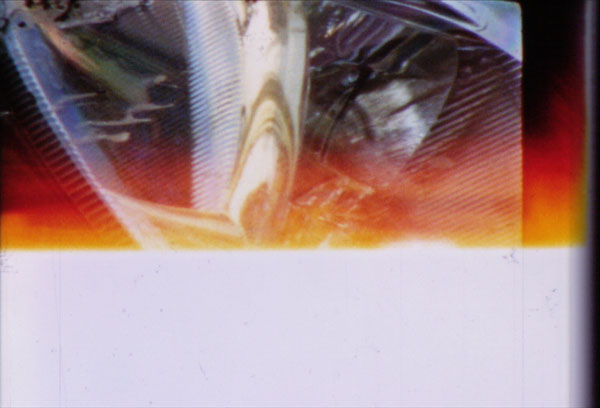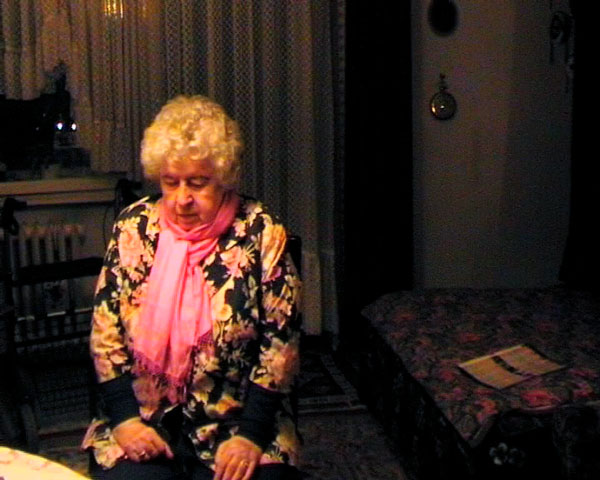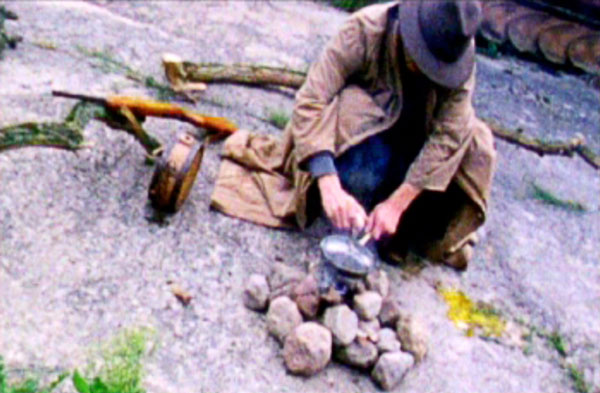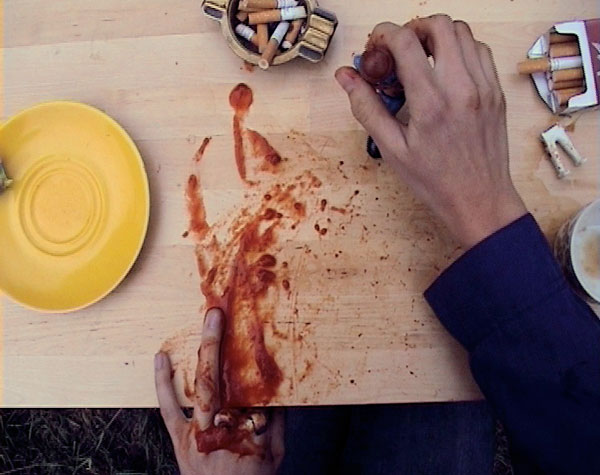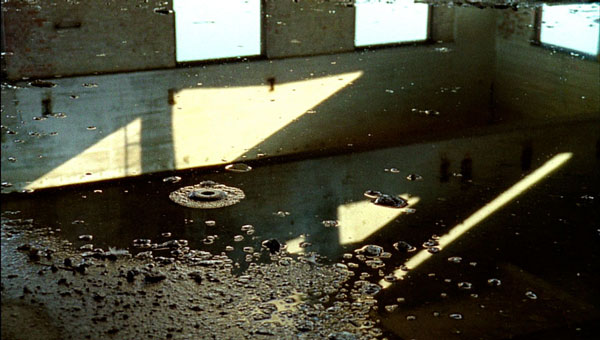directors lounge monthly screenings
clara bausch
momentum
Thursday, 25 January 2018
21:00
Z-Bar
Bergstraße 2
10115 Berlin-Mitte
Observations through the camera combined in different ways create new realities. Clara Bausch, who is born in Berlin and lives here as an artist, strictly works with analogue images in her films, installations and photography. It is the ordinary, simple things in live that capture her attention. And the combinations of impressions, occurrences and images that create reality. This may have drawn her to film where the spacing between images and their overlay both create new realities.
The new realities Clara Bausch creates in her art work are by no means science fiction or out of this world. On the contrary, they are different, sometimes very personal views onto our reality. Cinema, or the images of newsletters are as much part of this reality as is ordinary life. Rhythm, the space between images, or unexpected combinations create an intermission, an interval between images, which makes it possible to receive a new meaning - the opposite of information overflow in broadcast and so called social media.
In a number of films, Clara Bausch uses white space between the images, created by clear film. Fully overexposed film becomes clear during development, which for example happens if you open the camera. In "Blitzen #1", this is what Bausch does recurrently with her Super-8 camera in between taking pictures. As the Super-8 cartridge is protected by a plastic box, only a few images become overexposed. She takes a day for herself on the streets of Athens for her 3-minute film, edited in camera. The flashes of light create short burned-out sections combined with a red flair on the edge, often in the middle of the frame. They divide, and at the same time create joints between the camera images. Glimpses of buildings and street life photographed in reflections on glass, shopping windows, car lights and mirrors are thus being combined. They become associations of images instead of just being reproductions of street life.
Another series of films work with the overlays of images that happen if you illuminate a newsletter page from the back. "And the smile is red on red" takes this simple technique of image production onto the roofs of Kairo in order to communicate with people from Egypt. The film shows people who gather on the flat roof top of a house in the evening, when the heat decreases. And pictures at night with flashlights illuminating the newsletter cutouts Clara Bausch had brought from Germany. The voices narrate in English about what they see on the pictures, and in a very plain descriptive way. The film was entirely shot on 16mm and self-processed in Kairo. The montage is analogue, creating a story time from the very narrow shots the artist took of the people, the surrounding roofs, the illuminated Newsletter clips and the voices of the people. Each section only gives limited details of the gathering on the roof. In addition, the editing does not try to create a traditional narrative from the footage. While editing, Clara rather separates the different parts, creates a rhythm of montage, and thus a space in between the images, giving the viewer opportunity to create the story by "reading between the lines".
"Wald" on a first glimpse seems to be a more simple film. It shows the camera travel-panning over pieces of shrubbery on the edge of the woods. The sound is very present and seems to be original atmosphere sound. We hear people chatting when walking by. Over time, the viewer realizes that the pan travels through different seasons and different weather conditions and what started as a meditation on nature on a winter day becomes more complex as the story time unfolds, breaking the perception of continuity editing. The city and the relation of the city dweller to surrounding nature, become the primary story.
Clara Bausch also has a very playful side in her work, especially when working with Super-8. Analogue film has this very quality to deliver an almost tactile sensation with camera observations, which is a strong momentum for example for "Wald" (16mm). However, Super-8 also has this connection to amateur film. Those film lovers, who use low-fi equipment in order to do their own "big" film production, including script, lighting, special effects and intertitles. Many artists have used amateur styles for their films, and for Clara, it is connected with her background: her parents work as scenographers for film production. "Duke" is a film that has the settings of a "Western". It does not have the real narrative or dramaturgy of a Western, there is no real drama between the good and the bad guys, but it has all the paraphernalia, or you could also say, devotionalia. The campfire, the prairie grass, the horse carriage, the grim-looking cowboys, and of cause, the shoot-out. It does have many references, not just the Hollywood movies, but also the Spaghetti Western, the Karl-May Winnetou stories, the people in Germany playing Cowboys as adults in their leisure time and all the experience of Cowboy play as German children. What is special about Bausch's "adaptation" is her use of close-ups that add up to the "story" even though their color, grain and processing is very diverse. "I Love Road Movie" is another ironic reference to American mainstream cinema. The style of this film is very similar, and it becomes even more apparent, how the artist works with the material. The single takes of the film, mostly also close-ups, are working as symbols, or signifiers for the story, rather than trying to create the illusion of narrative time with continuity editing. It is a style that seems to go back to Eisenstein's theory of film syntax, his idea that each take should have a specific symbolic meaning. This would make it possible to create films from symbolic modules just like putting words into a sentence. If watching Eisenstein's Panzerkreuzer Potemkin, it becomes apparent, that the rules of continuity editing are being broken many times, and many pictures are added only for their symbolic significance. Eisenstein was planing to create his masterpiece on Mexico from such symbolic film modules, but was never able to finish the film. It is interesting that this kind of film language, which of cause has its origin in pre-Hollywood silent movies, appeal to filmmakers like Bausch for ironic references to Hollywood.
In her case, Clara Bausch's filmmaking, it is even more interesting to remark that the technique of putting together symbolic scenes, like a syntax, has something in common with her films that are divided by white flashes: the different qualities of the single shots, some of which are scratched, grainy, low on exposure, animated with drawings, or showing miniature models, create a spacing between the images, or an interval. And part of the fun for me as the viewer watching those movies is also, to combine those intervals, those disparate elements in my own mind instead of having them smoothly prepared and merged together with continuity editing. In this way, I am much more free to create my own associations in between the images, symbols and references.
Artist Link:
http://www.clarabausch.de/
Press Links:
Z-Bar - http://www.z-bar.de/
Directors Lounge - http://directorslounge.net
 Back Back
|
